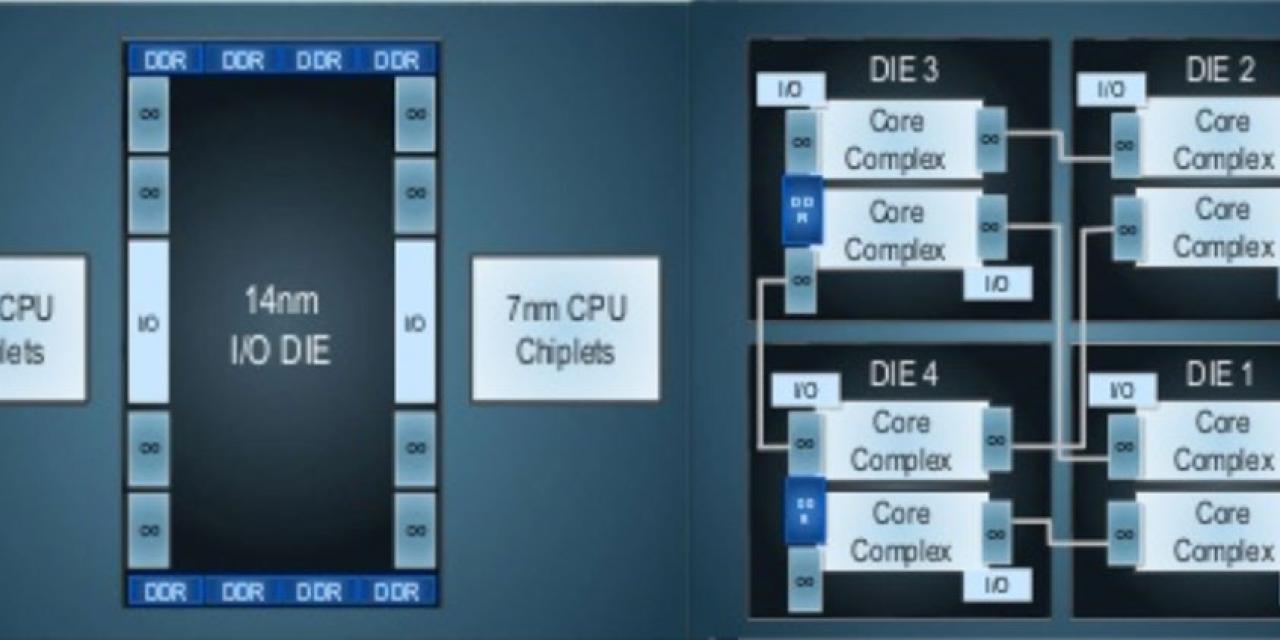
AMD's Next Horizon event this week detailed elements of its 7nm production schedule for both graphics cards and CPUs. Although the former isn't of much interest to us since the announced-so-far Vega graphics chips won't be made available to consumers, the CPU news is much more pressing as it furthers rumors that AMD's next-generation architecture will make it not only competitive with Intel on cost, but on overall raw power too.
The 7nm Zen 2 CPUs are half the size of the 14nm first-generation Ryzen chips, delivering the same level of performance at 50 percent reduction in power draw, or as much as a 25 percent performance improvement for the same power requirements. That will give AMD a lead over Intel in performance per watt, which could lead to AMD's top chips being more capable than Intel's in both single and multithreaded tasks for the first time in over a decade.
The reason for this goes beyond the die shrink though. AMD is also restructuring the Zen architecture for better memory latency, bandwidth support, and improved instruction implementation. It can handle native 256-bit AVX2 operations, which Zen and Zen+ couldn't do, resulting in a noticeably slow down during those particular instructions.
As ArsTechnica explains it, Zen 2 has a combination of 14nm and 7nm components under its hood. There is a single 14nm I/O die, with eight memory controllers, with Infinity Fabric ports and PCIexpress lanes, and then 7nm chipset which handle the CPU tasks themselves.
Zen 2 is sampling now and early benchmark tests are said to be good. Expect to see working silicon at CES 2019, with a general release in the first half of the year.








